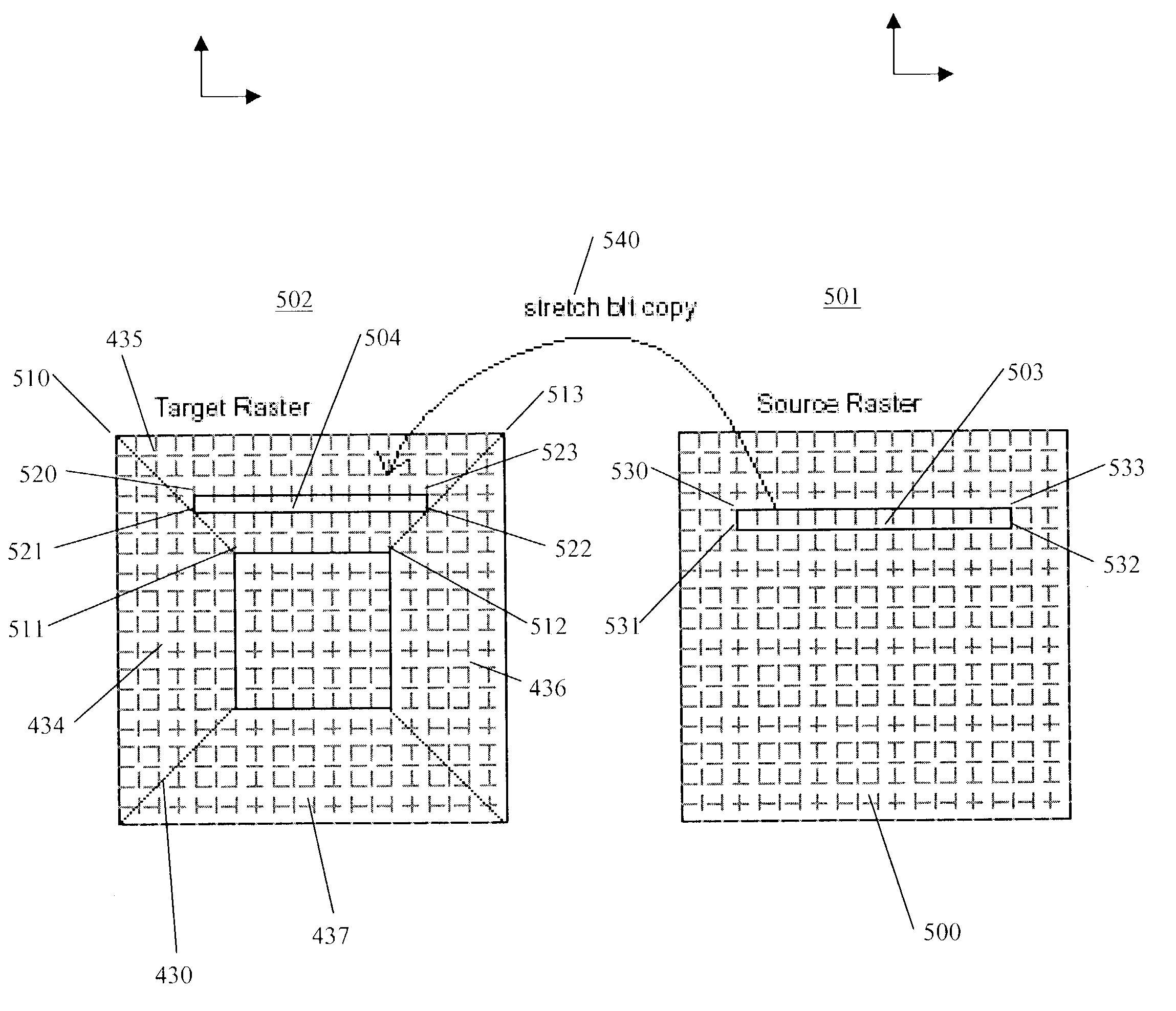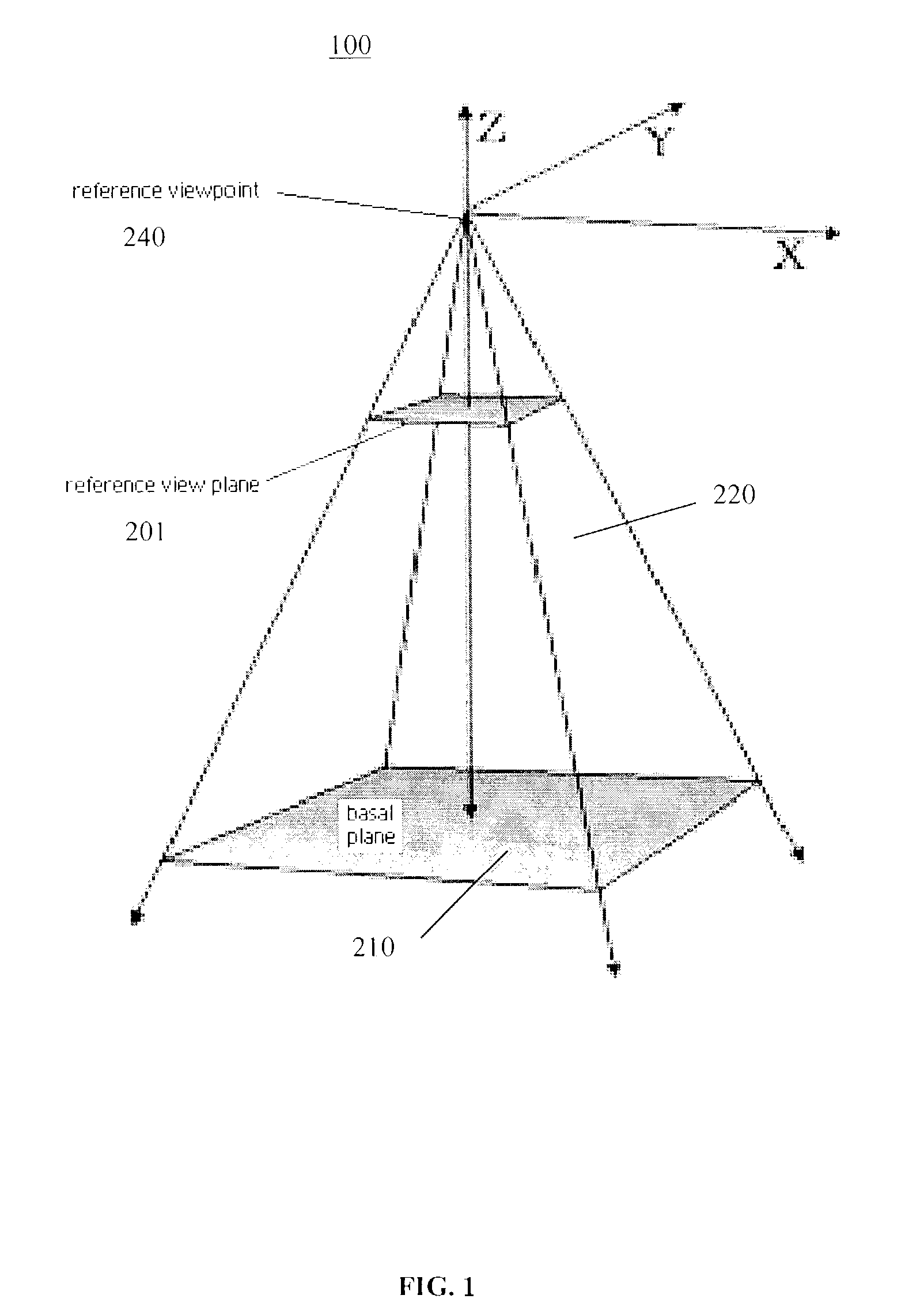Fast rendering of pyramid lens distorted raster images
- Summary
- Abstract
- Description
- Claims
- Application Information
AI Technical Summary
Benefits of technology
Problems solved by technology
Method used
Image
Examples
Embodiment Construction
[0027]In the following description, numerous specific details are set forth to provide a thorough understanding of the invention. However, it is understood that the invention may be practiced without these specific details. In other instances, well-known software, circuits, structures and techniques have not been described or shown in detail in order not to obscure the invention. In the drawings, like numerals refer to like structures or processes.
[0028]The term “data processing system” is used herein to refer to any machine for processing data, including the computer systems and network arrangements described herein. The term “Elastic Presentation Space” (“EPS”)(or “Pliable Display Technology” (“PDT”)) is used herein to refer to techniques that allow for the adjustment of a visual presentation without interfering with the information content of the representation. The adjective “elastic” is included in the term as it implies the capability of stretching and deformation and subseque...
PUM
 Login to View More
Login to View More Abstract
Description
Claims
Application Information
 Login to View More
Login to View More - R&D
- Intellectual Property
- Life Sciences
- Materials
- Tech Scout
- Unparalleled Data Quality
- Higher Quality Content
- 60% Fewer Hallucinations
Browse by: Latest US Patents, China's latest patents, Technical Efficacy Thesaurus, Application Domain, Technology Topic, Popular Technical Reports.
© 2025 PatSnap. All rights reserved.Legal|Privacy policy|Modern Slavery Act Transparency Statement|Sitemap|About US| Contact US: help@patsnap.com



